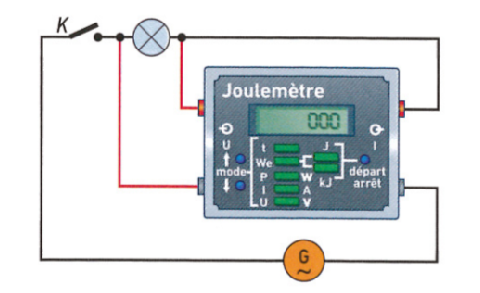What is a Node and Why Should I Operate One?
Contents
Blockchain Council creates an environment and raises awareness among businesses, enterprises, developers, and society by educating them in the Blockchain space. We are a private de-facto organization working individually and proliferating Blockchain technology globally. A Proof-of-Work blockchain, such as Bitcoin or Monero , includes miners who are responsible for the following. In virtual money, however, a node is a computer linked to a cryptocurrency network and may perform certain tasks such as producing, receiving and moving data. So, miners use powerful computing devices to run thousands of numbers every second and generate new hashes to see if they can find the solution.
His vision was to offer people a financial system that could do everything banks did for us but without the need to trust a central entity. Raspberry Pi is a small computer that can support the operation of a Bitcoin full node. It can be easily linked with supported software like RaspiBlitz.

If more nodes are added, the root node is considered a parent node and the connected node a child. A wide variety of data and resources are distributed via networks. Internet users can access and share audio, video, text, computer programs, and a lot more.
Communicating on a Network
Network nodes are the physical pieces that make up a network. They usually include any device that both receives and then communicates information. But they might receive and store the data, relay the information elsewhere, or create and send data instead. Blockchains are distributed ledgers that store the complete history of transactions on a certain network. It is a sequence of sets of transactions that everyone in the network agreed to be legitimate.
- So, any time an in-network user retrieves information, they are interacting with a node.
- A reliable super node typically runs 24/7 and has several established connections, transmitting the blockchain history and transactions data to multiple nodes around the world.
- One of the nodes on a circuit is where resistors will connect to a power supply.
With your personal computer, all you have to do is download the Blockchain software, and you can set up the node. From there, the blockchain uses your personal node to verify and update your balance instead of using another person’s node. One of the best parts of the blockchain is how everyone can participate in it. Of course, as the technology https://cryptolisting.org/ progresses and becomes more popular, establishing a node yourself will become harder. But this doesn’t take away from the fact that just about anyone can start running a Blockchain node without having to worry about getting permission to do so. Each of the data sets containing each transaction’s information is called a “block”.
Data can be discovered along these network paths.An IP address uses this kind of system of nodes to define its location in a network. To counteract network congestion, lightning nodes execute transactions off-chain through separate, out-of-network connections. Once processed, the transactions are added to the main blockchain. This workaround makes for low-cost, instantaneous exchanges while lightening the load on the network.
Miners’ nodes
This object uses the Element interface to define all the methods and properties of that particular node. In programming, XML is used to communicate information between computer programmers and computers alike. For this reason XML is used to create common communication protocols used in office productivity software, and serves as the base for the development of modern web markup languages like XHTML. Though similar in how it is approached by a programmer, HTML and CSS is typically the language used to develop website text and design. While XML, HTML and XHTML provide the language and expression, the DOM serves as a translator. A node is a basic unit of a data structure, such as a linked list or tree data structure.
This is impossible with other services as you will need validation and confirmation from the top of the system before running a node yourself. If you know a bit about computer science, then you might have an idea of what a node is. In computer science, a node is simply a smaller component that plays a part in a larger system. And while this is an accurate definition, it gets a bit more complicated when you put things in the context of cryptocurrency.
Those nodes have identifiers that allow the network and other devices to know what device is connected. Examples of these identifiers are Internet Protocol Addresses and Media Access Control Addresses. The role of these addresses is to ensure that the data is transferred to the correct device by the network, so those addresses must be unique to the network. Since every node must be unique in order to be differentiated from the other nodes, every device has a unique hardware identifier called a MAC address that is not duplicated on any other device. If a device has multiple NICs, each NIC will have its own MAC address, assigned by the manufacturer. This MAC address allows the network to uniquely identify that device or node, and it will be assigned or defined an address.
To be a part of a TCP/IP conversation, you need to have an IP address. Clearly, you would need to provide your mailing address to those who want to send you mail. So, if someone wants to send information on a network, they need to know where to send it. The address is a unique identifier used to properly route data. Blockchain nodes are network stakeholders and their devices are authorized to keep track of the distributed ledger and serve as communication hubs for various network tasks. In layman’s language, a node is an intersection point or connection in a telecommunication network.

It comes from the Latin word for knot, and in each instance it refers to a singular point or element. A node is a structural element representing a significant point in a pipeline or underground infrastructure. Structures such as a manhole or inspection point may be considered nodes.
To choose legitimate transactions to generate a new block, a miner must always operate a complete node. A device can run a complete node by receiving, storing, and broadcasting all transaction data without creating new transaction blocks . In this scenario, it acts more like a passing point with a directory, whereas a miner does the same and tries to produce new blocks of transactions. The role of Bitcoin Cash nodes is similar to how other nodes work; they contribute to the security of the network and help verify transactions. And like the aforementioned blockchain networks, the BCH network also allocates rewards to nodes who participate in mining — although running a node without mining does not result in a reward. Every device connected to the blockchain is considered a node and that there are multiple different types of nodes.
Generally, nodes are classified as full nodes and lightweight nodes. A full node downloads the entire history of the blockchain, so it can enforce the rules and observe the activity. Nodes are critical to the operation what is viewo of a blockchain network because they keep all participants honest and assure data integrity. Most blockchain networks utilize monetary incentives, such as mining or staking, to motivate users to operate complete nodes.
How to Run a Node?
This article is not intended as, and shall not be construed as, financial advice. The views and opinions expressed in this article are the author’s [company’s] own and do not necessarily reflect those of CoinMarketCap. Bitcoin requires 350 GB of available storage; however, you can opt to run a pruned full node, which only demands 7 GB. At least six hours a day for your full node to be left running.

A masternode host’s interest rate is computed based on their collateral deposit. Nodes determine whether or not a block of transactions is legitimate and accept or reject it. The miner who finds the right solution for a block with Bob’s transaction first shares it with the entire network of nodes for approval.
What are Blockchain nodes? Detailed Guide
So, that still means that you will have to connect to a full node to be able to run the node and communicate with the network. It took a while for cryptocurrency and the technology behind it to become mainstream. One thing to consider is that linked lists use up memory and don’t allow direct access to the individual nodes in the middle of the sequence. A pointer references a location in a computer or program’s memory. An index page is filled with page numbers that ‘point’ back to the corresponding page.
Furthermore, users of Node.js are free from worries of dead-locking the process, since there are no locks. Almost no function in Node.js directly performs I/O, so the process never blocks except when the I/O is performed using synchronous methods of Node.js standard library. Because nothing blocks, scalable systems are very reasonable to develop in Node.js. Because of this, supernodes require more CPU and bandwidth than regular nodes.
As more individuals get interested in cryptocurrencies like bitcoin, there is a greater need for them to understand how the system works. Of course, this is true in any sector, but the uniqueness of cryptocurrency heightens its appeal. You can run a full node on most basic computers that come with just 350 GB, 2 GB RAM, and an unmetered internet connection.
Invest In Your Learning Today!
Additionally, users will need to have a fast internet connection in order to be able to synchronize the entire blockchain without delays. The most popular usage of the term “node” is seen in the blockchain space. In this guide, we will explain what nodes are in more detail, including the different types of blockchain nodes being used today. When it comes to computer or telecommunication networks, nodes may act either as a redistribution point or as a communication endpoint. Usually, a node consists of a physical network device, but there are some cases where virtual nodes are used.
Here are the suggested requirements needed to run a full node or a validator node on BSC. The full guide on setting up a Monero node is accessible on its website. In order to receive block rewards, you would have to run an Ethereum staking node. You can find a list of clients you can use in running a node on Ethereum’s website. There are many ways to run your own Ethereum node, but some popular hardware that can work on the network are DAppNode and Avado.
If you have two computers and a printer at home, your total node count is three. In this post, we are going to break down a ‘node’ and its role in computer science and programming. Emma is a graduate from the University of Alabama with a degree in education and is currently pursuing a master’s degree at George Washington University for publishing. Having both taught and studied online, she has experience on both sides of online education. Emma is an avid writer who enjoys helping others by writing engaging educational content. When she’s not writing blogs or reading the newest academic studies, you’ll find her spending time with her family and her favorite cat.
